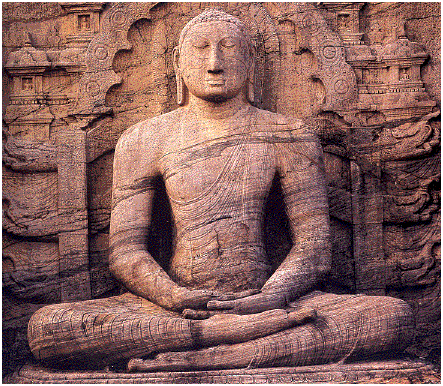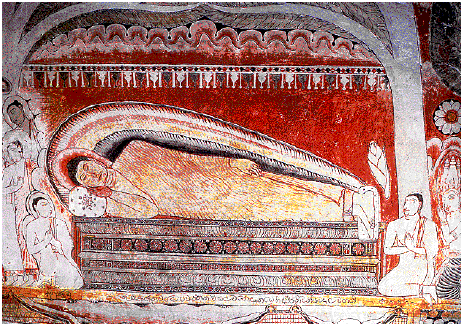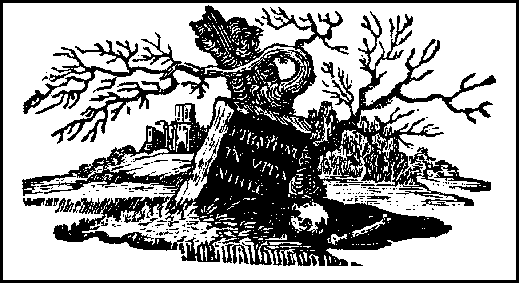Kevin Trainor, Editor
(Oxford)

My favorite description of Buddhism came in an earlier review of a book on the same subject, in this magazine, that, in part, went as follows:What are the Noble Truths?
- All of life is a pain-in-the-ass;
- There is a reason why it is such a pain-in-
the-ass: 'cause we're always wanting stuff we can't have --- or aren't supposed to have; - However, there is something called Nirvana, and it's the way out of this mess;
- The WayOut (as Winnie-
the- Pooh would have it) is in the Noble Eightfold Path. The Eightfold Path?
Then, too --- meditate, shut up the babbling monkey-mind. How?
- Talk nice.
- Be nice.
- Work nice.
And if that doesn't bust your balls, let me tell you (the Master said), you have to worry about your next life as well. Because if you don't work it out this time around, they're gonna make you come back again, and again (and again) until you finally figure out how to do it right. (How's that for punishment? 100,000 lifetimes, starting at this moment, just for being a jerk?)
- Don't just sit there: work at it.
- Keep your mind from wandering all over the place.
- Concentrate as if your life depends on it.
Finally, the last of the Eight: You need to get something called "right understanding," and, as well, "right resolve." Which means?
Live the holy life. Don't be beating on people (or dogs or cats or horses, for that matter). Because we're all tied together. When they make you come back again, as yet another people --- all this crap is going to come floating back with you, like when the toilet overflows --- as "a new birth and further sorrow, sickness, grief, and death."
How many times do you want to go through this crap, anyway? If you're on your deathbed thinking about the last big screw, or wanting to make just another $50,000 on the stock market, or still trying to get back at you brother who stuck it to you sixty years ago --- these will pop up in your new life, "a flame," as Buddha said, "that leaps from one wick to another."
The main problem, the one that always-
always sticks it to us, is that (ready?) --- We
Are
Always
Becoming§ § § Buddhism: The Illustrated Guide is certainly handsome. Over 250 pages, stuffed with color photographs. Essays by six experts, including Kevin Trainor, the learned general editor. Origins, Principles and Practice, Holy Writings, and Buddhism Today are the four sections. Under each of these, there are chapters --- and each chapter may have four to ten double pages dedicated to a single subject.Under Holy Writings, for example, you'll find Mayayana Scriptures --- which will include the Perfection of Wisdom Sutras, the Lotus Sutra, the Pure Land Sutras, the Yogachara Sutras, the Nirvana Sutra and Tantric Writings. We are not getting snippets of Buddhism --- we are getting dunked bodily in it, and should end up knowing (perhaps) more than we would ever want to know about Theravada, Mahayana, Chan, Zen and Tantra.
One of the attractions to Buddhism is that it manages to avoid the solemnity and the fire-and-
brimstone anger of Islam and the Western religions. Since it is a creed of peace, it embodies the tranquillity of meditation, quiet good acts and, at times, the merry contrariness of, for example, Zen. Those of us who found Buddhism by listening to Alan Watts or reading the American masters like Suzuki found a religion that is not necessarily solemn, but also joyous. The writing in Buddhism is stolid, but, alas, in no way inspiring. It smacks of let's-learn-
your- lessons university stuff. This is from the introduction to Zen, by Mark Blum,
Zen Buddhism is characterized by devotion to the practice of meditation and a rather irreverent, often unpredictable, teaching style. Although it has its roots in Indian Buddhism, and first reached east Asia via China, Zen is best known in the west as a distinctively Japanese form of Buddhism. The name Zen is the Japanese transliteration of the Chinese word Chan. This is an abbreviation of chan na, which is in turn a transliteration of the Sanskrit dhyana, meaning meditation.
As for koans, we get a 100 word inset titled "Meditation Puzzles." As an example: "How is it that one hair digs many ditches." Answer:
...one must realize that the hair represents the Absolute and the ditches the myriad phenomena of the material world.
No. With koans, one doesn't have to realize beans. One meditates on the words --- sometimes for years --- until they dissolve and something called "ultimate understanding" or "enlightenment" takes their place.
It's not that we fault the serious scholarship here: that's what the editors at Oxford wanted, and that's what they got. Still, we miss some of the whimsy of Zen. If you don't understand what I am telling you, just remember who you were before you were.
These are minor complaints if you are looking for a serious overview of Buddhism. The pictures are so glorious --- the Ivolginskiy monastery in Siberia, the gilt statue of Buddha in Shwedagon pagoda in Rangoon, the statue at Maitreya, and, above all, the reclining Buddha at Pagan in Burma --- that they alone are well worth the price of admission ($39.95)

--- Carlos AmanteaLuisa and
The Silence
Claudio Piersanti
Translated by
George Hochfield
(Northwestern)Roman Polanski's second film was a twenty minute study of the past love life of a woman who ended up working in the public toilets of Warsaw, selling bits and pieces of toilet paper. He said that he figured that everyone had a history, had love, joy. He figured that this whizen half-senile woman had a story to tell, and he attempted to record it for posterity.Piersanti has chosen to do the same thing, in fictional form. Luisa and the Silence follows Luisa, an accountant for a large toy company before, during, and after her retirement. She has worked for them for decades, is honest, is important --- at least in that small world. We are told what she eats, what she drinks, what she thinks, what she remembers, what she does, how she reacts to her fellow-workers.
We follow her as she leaves, as she ages, as she begins to go senile --- always fending off friends and relations and her ex-husband who want to help her, at least get her to the doctor. We are with her as she watches her canary, writes letters to the mayor about the ruffians making noise in the street below, watches television, and, as she sickens, begins to drift in and out of fantasies --- visions of pigs, memories out of her past, remembering her husband Bruno and her long ago lover Lorenzo.
Her life was transparent. If she felt bad, she could pray. Good Lord Jesus, I look to you as a modest retiree, full of pains and stinking sores. Pity me, pity me. Even if I don't believe in you and your holy kingdom have pity on me. Lord pity, Christ pity.
Luisa comes across as a vain and pettish woman, proud of her small accomplishments in her small world. Which brings us to the nub of it. Can we get worked up about one whose life is so common, so common that we despair as the author takes us through yet another day with her? ---
She tried to get herself into the habit of going to the park every morning, if it wasn't raining and she felt well. The fever, which she had decided to ignore, came back only in the afternoon. Around ten o'clock, she stuck a mystery or a magazine into her purse and walked calmly to the park. She never met old people, only students and mothers with their carriages. The students, almost all from the university...
etc etc blah-blah-blah.
If we are to feel the tragedy of a woman coming to the end of a life (which to all intents and purposes had and has little significance), there must be something that sweeps us into her world, into passion or hate or bitterness or joy or craziness or wonder.
God knows we tried with this one --- we made it to the end, to page 165. Although Luisa's last few days on earth at least have the mild interest of delusion, it is not enough to make the reader lay this one down and think that we have learned any exciting secrets of your average middle class boor. To have Luisa come to life the author would have to defeat his main purpose --- limning the last days of a woman alone --- would have to jam someone else into her universe: an old passion, a thief, a murderer, a lunatic (someone, in other words, out of Dostoyevski) to give her and the reader a bit of a jolt.
But it never comes to pass, and she whispers off the stage. "They found her several days later, and two municipal employees took her away." Thus, instead of being a character to excite our wonder or our pity, she becomes just one of hundreds of millions of the aged, the dying, the alone who disappear from the world without giving or receiving interest, love, or grief.
--- Lolita Lark
